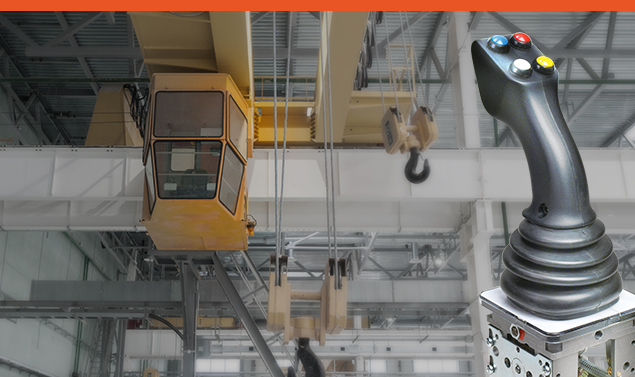
Regular crane inspection is essential and required to maintain safe and efficient operations. With the complexity and scale of most cranes (i.e. overhead, gantry, foundry, ship-to-shore, straddle, etc.), the joysticks / master switches and operator chair systems often receive less attention during inspection due to the many other structural, mechanical, and electrical components that are critical to machinery operation.
The joysticks and chair system are the only parts of the crane that operators physically come in contact with to put the crane into motion. Whether your crane sees minimal, moderate, or heavy usage, over time the control systems will begin to show their age. Understanding what areas of your controls to regularly inspect will ensure that you stay ahead of any potential breakdowns or failure that may occur over the lifetime of your crane.
Check the Chair
It is vital to maintain the condition of your operator chair system to ensure a safe and productive working environment. Most operator chair systems offer numerous adjustment capabilities to help optimize comfort and reduce stressful operating positions. This flexibility enables operators of different statures to find a comfortable position and viewing angle that will allow them to effectively and efficiently operate the crane.
Chair systems should be regularly inspected for wear and tear from general usage, while also ensuring that all adjustment capabilities are functioning properly. This includes the seat, backrest, suspension, and console movements. If you find that any part of the chair system is not functioning properly, it should be repaired or replaced. Any restraint in seating comfort can cause operational inefficiencies and, if prolonged, potential operator injury.
Take the Controls for a Spin
Industrial joysticks and master switches are what your operators use to activate and control the crane. If these control systems fail, so does your crane and operation. To avoid downtime and promote safety, it is best practice to regularly inspect the general function and state of your joysticks. Below is a list of areas to periodically inspect to ensure optimal operator and machinery operations (IMPORTANT: Remember to disconnect all power prior to servicing the joystick):
Inspect joystick for torn or damaged boots and replace them immediately.
Torn or damaged boots will allow dirt, dust, and liquids to make their way into the joystick, while also potentially causing restrictions in joystick movement.
Check the tightness of assembly and mounting bolts.
Loose bolts can affect joystick movement and negatively impact operator accuracy.
Ensure the joysticks operates smoothly and all contact blocks operate properly.
Any irregular clicks, jumps, or resistance could be the sign of a damaged contact block, yoke, or other components.
Look for pitted or burnt contacts and ensure blocks are secured in place with no damage. Damaged contacts will eventually lead to joystick failure.
Spot-check the center position of the joystick or how the joystick sits vertically.
Off-center joysticks may have a misaligned yoke or drive, which will eventually result in a breakdown.
Many of these inspection points should be monitored by your maintenance department on a regular basis. Operators may also be a good resource for general inspection and will likely be the first to identify any irregularities in control function and movement.